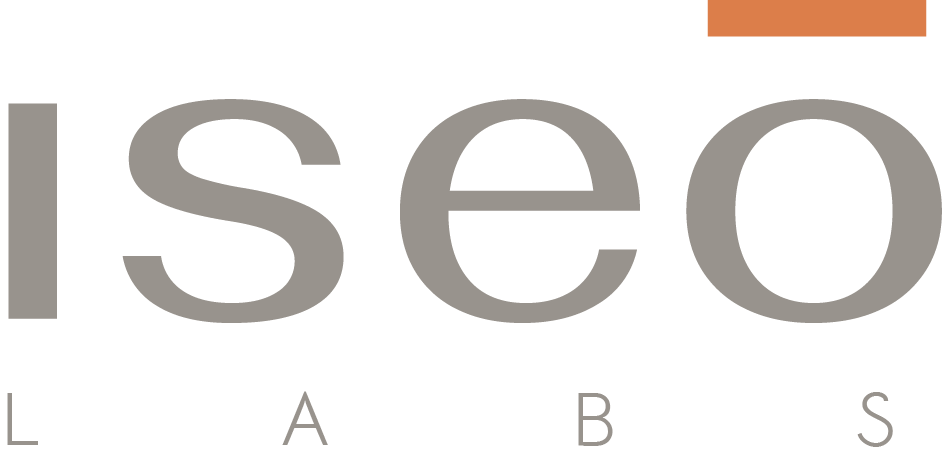SOLUTION OVERVIEW
Unlock the Power of SharePoint Information Architecture
Are you looking to improve your organization’s digital workspace? Do you want to ensure that your business’s data is secure and easily accessible? SharePoint Information Architecture is a powerful approach that can help you achieve these goals.
In this blog article, we’ll explore SharePoint Information Architecture and its benefits, best practices, and considerations. We’ll also discuss SharePoint Online Architecture and provide a checklist of actions to help you design an effective SharePoint Information Architecture. Let’s get started!
What is SharePoint Information Architecture?
SharePoint Information Architecture (IA) is a way of organizing, structuring, and connecting data, information, and content in a digital workspace. It helps you create an efficient and secure environment that enables your users to find the content they need quickly and easily.
SharePoint Information Architecture includes three important components: content types, metadata, and taxonomy. Content types are the building blocks of SharePoint Information Architecture and are used to define the types of data, information, or content stored in a digital workspace. Metadata is information about the content that is used to describe, categorize, and search for data. Taxonomy is the process of organizing content into categories and hierarchies.
SharePoint Information Architecture is a powerful approach for managing digital workspaces because it helps you create a secure, organized, and easily searchable environment. It can also help you make sure that the content within your digital workspaces is properly structured and accessible.
Benefits of SharePoint Information Architecture
SharePoint Information Architecture can provide many benefits to your organization, including:
-

Improved searchability
SharePoint Information Architecture makes it easy to find the content you need quickly and easily. With properly structured metadata, you can easily search for content using keywords and filters.
-

Increased efficiency
By organizing and structuring content, SharePoint Information Architecture can help improve the efficiency of your digital workspace. With content types and taxonomies, you can quickly find the information you need without having to search through endless amounts of data.
-

Improved security
SharePoint Information Architecture also helps improve the security of your digital workspace. With properly structured content types and taxonomy, you can easily restrict access to sensitive data.
-

Enhanced user experience
With SharePoint Information Architecture, you can create a user experience that is more engaging and intuitive. With properly structured content types and taxonomy, users can easily find the content they need without having to search through endless amounts of data.
-

Reduced costs
SharePoint Information Architecture can also help reduce the costs associated with managing digital workspaces. By organizing and structuring content, you can reduce the amount of time and money spent on manual data entry, retrieval, and maintenance.
SharePoint Information Architecture Best Practices
When designing and implementing SharePoint Information Architecture, it’s important to follow best practices to ensure the success of your digital workspace. Here are some best practices to keep in mind:
Define content types: Content types are the building blocks of SharePoint Information Architecture, so it’s important to define them properly. Make sure to create content types that accurately describe the types of data, information, or content stored in your digital workspace.
Establish taxonomy: Taxonomy is the process of organizing content into categories and hierarchies. When establishing your taxonomy, make sure to create logical categories and hierarchies that accurately describe the content stored in your digital workspace.
Design metadata: Metadata is information about the content that is used to describe, categorize, and search for data. When designing your metadata, make sure to include keywords and filters that accurately describe the content stored in your digital workspace.
Define Site templates: Specific Site Templates are used to reflect the different types of Sites you will need to address your information management and sharing needs. Consider creating Site templates for Departmental Sites, Collaboration Sites and Extranet Sites.
Establish Navigation Hubs: Navigation hubs for Departments and Collaboration Sites makes it easier for your users to find and navigate through the different Sites you will create.
Monitor usage: It’s important to monitor the usage of your digital workspace to make sure that it is being used properly. Monitor user activity to ensure that users are accessing the content in the correct way and that content is being shared appropriately.
Adapt over time: As your digital workspace evolves, it’s important to periodically review and adjust your SharePoint Information Architecture. Make sure to review and update your content types, metadata, and taxonomy to ensure that your digital workspace is organized and secure.
SharePoint Online Architecture
SharePoint Online is a cloud-based platform for creating and managing digital workspaces. It provides a secure and intuitive environment for storing and sharing data, information, and content.
SharePoint Online includes several components that can help you create and manage digital workspaces, including SharePoint sites, libraries, lists, and web parts. SharePoint sites provide a secure and intuitive environment for storing and sharing data, information, and content. Libraries provide a structure for organizing and managing digital content. Lists provide an easy way to store and share data. And web parts provide an easy way to customize your digital workspace.
SharePoint Online also includes several features that can help you create an effective SharePoint Information Architecture, including content types, metadata, and taxonomy. With these features, you can easily structure, organize, and manage your digital workspace.
Designing an Effective SharePoint Information Architecture
Designing an effective SharePoint Information Architecture requires careful planning and attention to detail.
Here are some tips to help you design an effective SharePoint Information Architecture:
-
1. Define your objectives
Before you begin designing your SharePoint Information Architecture, it’s important to define your objectives. What do you want to achieve with your digital workspace? What types of data, information, and content do you want to store?
-
2. Define content types
Content types are the building blocks of SharePoint Information Architecture, so it’s important to define them properly. Make sure to create content types that accurately describe the types of data, information, or content stored in your digital workspace.
-
3. Establish taxonomy
Taxonomy is the process of organizing content into categories and hierarchies. When establishing your taxonomy, make sure to create logical categories and hierarchies that accurately describe the content stored in your digital workspace.
-
4. Design metadata
Metadata is information about the content that is used to describe, categorize, and search for data. When designing your metadata, make sure to include keywords and filters that accurately describe the content stored in your digital workspace.
-
5. Define Site Templates
Sites are the Information Hubs for your organization. Use Site Templates to help users find information structured in standardized layouts using Site Information Web Parts and standard Document Libraries with defined access permissions easily.
-
6. Monitor usage
It’s important to monitor the usage of your digital workspace to make sure that it is being used properly. Monitor user activity to ensure that users are accessing the content in the correct way and that content is being shared appropriately.
SharePoint Information Architecture Considerations
When designing and implementing SharePoint Information Architecture, there are several important considerations to keep in mind. Here are some of the key considerations to keep in mind:
Security: Security is an important consideration when designing SharePoint Information Architecture. Make sure to create a secure environment that restricts access to sensitive data and information.
User experience: User experience is also an important consideration when designing SharePoint Information Architecture. Make sure to create an intuitive and engaging user experience that makes it easy for users to find the content they need. Use Navigation Hubs and standardized Site Templates for improved usability.
Scalability: Scalability is another important consideration when designing SharePoint Information Architecture. Make sure to create a system that can easily scale up or down depending on the size and complexity of your digital workspace.
Data integrity: Data integrity is an important consideration when designing SharePoint Information Architecture. Make sure to create a system that can easily maintain the accuracy and consistency of data stored in your digital workspace.
Cost: Cost is also an important consideration when designing SharePoint Information Architecture. Make sure to create a system that is cost-effective and can help reduce the costs associated with managing digital workspaces.
SharePoint Information Architecture Security
SharePoint Information Architecture can provide a secure environment for storing and sharing data, information, and content. Here are some tips to help you secure your SharePoint Information Architecture:
-

Use authentication
Authentication is an important security measure that can help protect your digital workspace from unauthorized access. Make sure to use authentication methods such as passwords, two-factor authentication, and biometric authentication to ensure that only authorized users can access your digital workspace.
-

Use encryption
Encryption is an important security measure that can help protect your data from unauthorized access. Make sure to use encryption methods such as AES 256-bit encryption and TLS/SSL encryption to ensure that your data is secure.
-

Monitor usage
It’s important to monitor the usage of your digital workspace to ensure that it is being used properly. Monitor user activity to ensure that users are accessing the content in the correct way and that content is being shared appropriately.
-

Implement policies
Implementing policies is an important security measure that can help protect your digital workspace from unauthorized access. Make sure to implement policies such as data retention policies, access control policies, and data classification policies to ensure that your data is secure.
-

Implement backups
Implementing backups is an important security measure that can help protect your digital workspace from data loss. Make sure to implement data backups to ensure that your data is secure and can be recovered in case of an emergency.
SharePoint Information Architecture Checklist
When designing and implementing SharePoint Information Architecture, it’s important to follow a checklist to ensure the success of your digital workspace. Here’s a checklist of actions to help you design an effective SharePoint Information Architecture:
1. Define objectives
2. Define content types
3. Establish taxonomy
4. Design metadata
5. Define Site templates
6. Monitor usage
7. Implement authentication
8. Implement encryption
9. Implement policies
10. Implement backups
11. Adapt over time
SharePoint Information Architecture Tools
There are several tools available that can help you design and implement an effective SharePoint Information Architecture. Here are some of the most popular SharePoint Information Architecture tools:
SharePoint Designer: SharePoint Designer is a powerful tool for designing and managing SharePoint Information Architecture. It provides a drag-and-drop interface for creating content types, metadata, and taxonomy.
SharePoint Online: SharePoint Online is a cloud-based platform for creating and managing digital workspaces. It provides a secure and intuitive environment for storing and sharing data, information, and content.
SharePoint Migration Tool: The SharePoint Migration Tool is a free tool for migrating content from other systems to SharePoint. It helps you quickly and easily migrate content from other systems to SharePoint.
Metalogix Content Matrix: Metalogix Content Matrix is a powerful tool for managing digital workspaces. It provides an intuitive interface for creating and managing content types, metadata, and taxonomy.
SharePoint Manager: The SharePoint Manager is a powerful tool for managing SharePoint Information Architecture. It provides an intuitive interface for creating content types, metadata, and taxonomy.
Conclusion
SharePoint Information Architecture is a powerful tool for managing digital workspaces. It can help you create an efficient and secure environment that enables your users to find the content they need quickly and easily.
When designing and implementing SharePoint Information Architecture, it’s important to follow best practices and consider key considerations. It’s also important to use tools such as SharePoint Designer, SharePoint Online, SharePoint Migration Tool, Metalogix Content Matrix, and SharePoint Manager to help you design and implement an effective SharePoint Information Architecture.
Are you ready to unlock the power of SharePoint Information Architecture? If you’re looking to improve your organization’s digital workspace, contact us today to learn how we can help you create an efficient, secure, and intuitive environment for storing and sharing data, information, and content.







